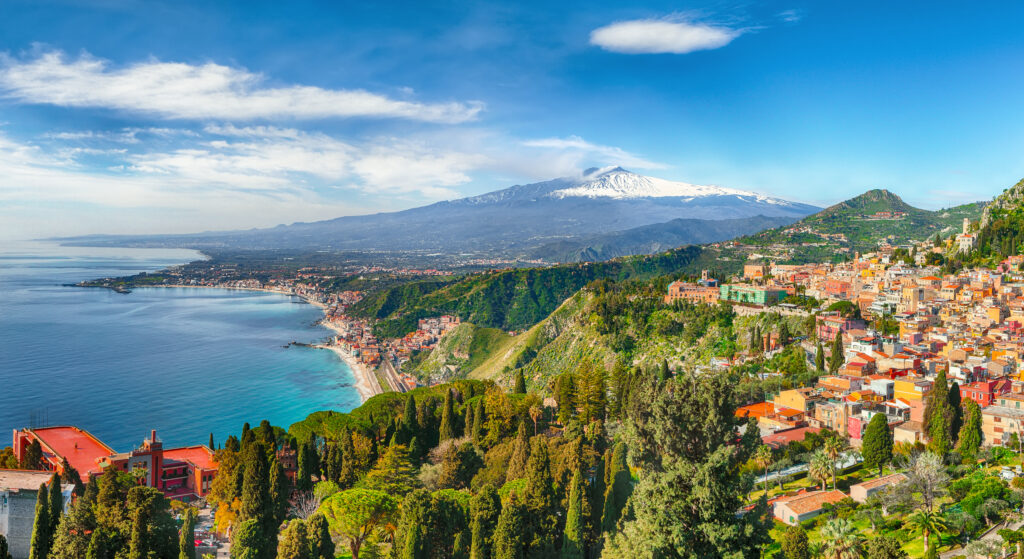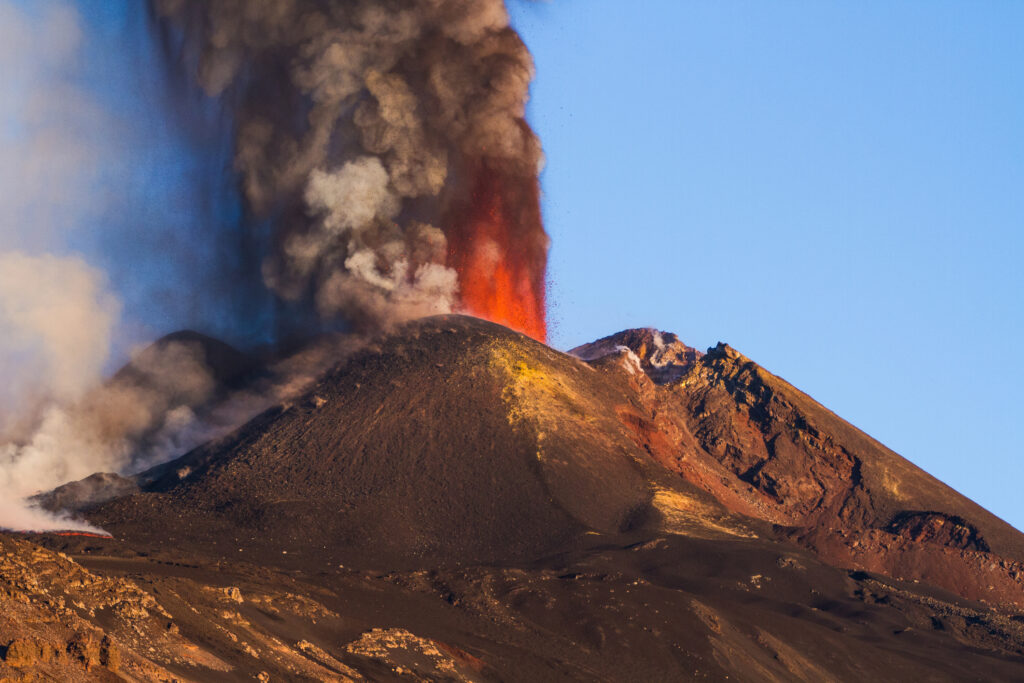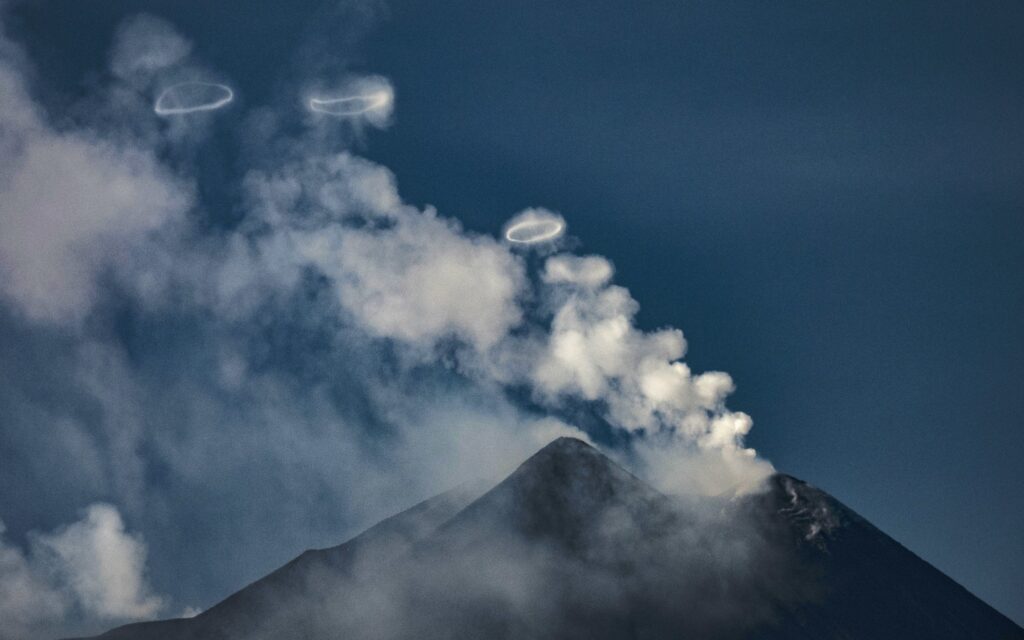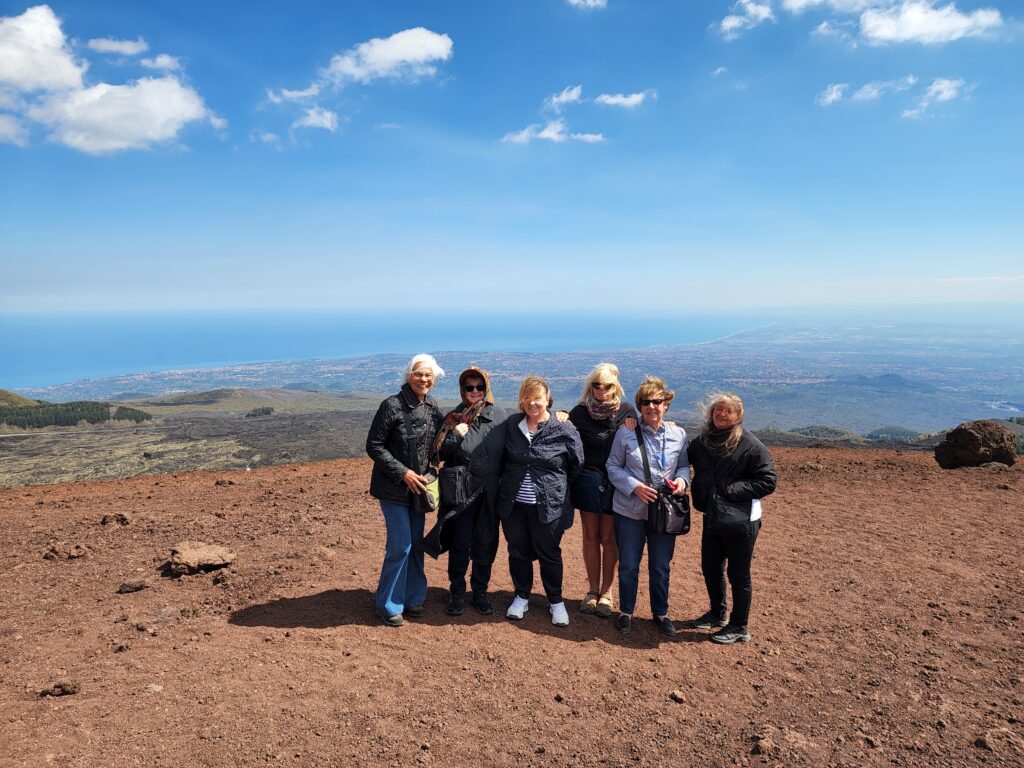Considered one of the world’s most active volcanoes and Europe’s largest, Mt Etna towers over Sicily’s second-largest city, Catania. Located on the east-coast of Italy’s largest island, Mt Etna is a recognised UNESCO World Heritage site which today is the most strictly protected, monitored and best-studied volcano in the world.
A little history and mythology
The name Etna comes from the Greek word ‘aithō’, which translates to ‘I burn’, a fitting name for an active volcano, we think. Studied since the middle of the 19th Century, scientists state the volcano has been active for over two million years, and volcanic activity documented for at least 2,700 years.
Etna features heavily in Greek mythology with Hephaestus the God of fire, volcanoes and blacksmiths (Vulcan in Roman mythology) having his furnace, anvil and workshop inside Mount Etna. There the God of Fire worked and crafted iron and bronze into weapons and treasures for the gods.
What makes up Sicily’s Mt Etna?
Like with all volcanoes, Mt Etna varies in height with each eruption, today sitting at 3,357 metres, with a base circumference of 150 kilometres. Featuring four main craters, Mt Etna has almost three hundred lateral craters scattered across its vast structure. These craters are in fact extinct, only active once, and after their eruption solidly sealed never able to erupt again. There is also a 26,220 hectare buffer zone featuring parts of Mount Etna Regional Nature Park, and two tourism zones which include car parks, restaurants, cafes, a cableway and accommodation.


Are you able to climb Mt Etna?
Yes absolutely, Mt Etna can be explored all year round, just remember to rug up as it’s cold up there. You can do certain areas solo (up to approx. 2,800m), but if you are keen to reach the summit you will need to join an organised tour to guide you safely up to the volcano’s summit, and the best part is they will share interesting facts along the way. The climb is considered an easy hike if you are up for it, or you could drive up to a point and do the rest by foot. Bear in mind, you are hiking up an ‘active’ volcano and that’s exciting, but caution must be taken – remember get yourself a guide who is familiar with the volcano and its surrounds.


So what is new with Mt Etna, Europe’s largest volcano?
Well she is erupting; Sicily’s Mount Etna has been putting on an eruptive show as recent as 7th July 2024. Molten rock, hot rock fragments, and hot gases have been thrown out of Etna’s summit crater, hot lava making its way down previous narrow channels.
To make the recent eruption even more captivating, Mt Etna has been blowing near-perfect rings into the Sicilian sky. Scientists identified a new crater as the culprit to the unusual display of the now referred to ‘smoke rings’, perfect circular shapes made of gases propelled by a circular vent from the volcano.
Want to experience the beauty and grandness of Sicily’s Mt Enta?
Vita Italian Tours can personally guide you up to the now inactive Cratères Silvestri, the highest point on Mt Etna which you can reach by car, as part of our luxury small group journey exploring the best destinations that make up the beautiful island of Sicily. Join us on the Colours of Sicily small group tour to experience life as a Sicilian.
If independent travel is more your style let us devise a tailor-made travel itinerary for you to explore this wonderful historical and natural site and its surrounds. 4×4 Jeep Tours, Walking Tours, Summit Trekking and Wine Tours there are so many ways to experience Mt Etna.
Contact us today to start planning your visit.

